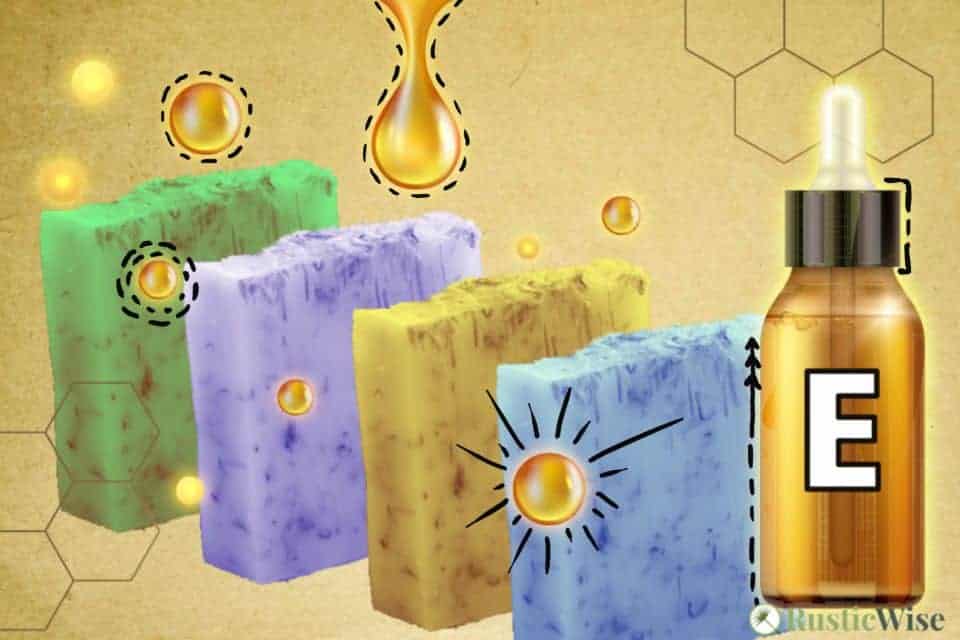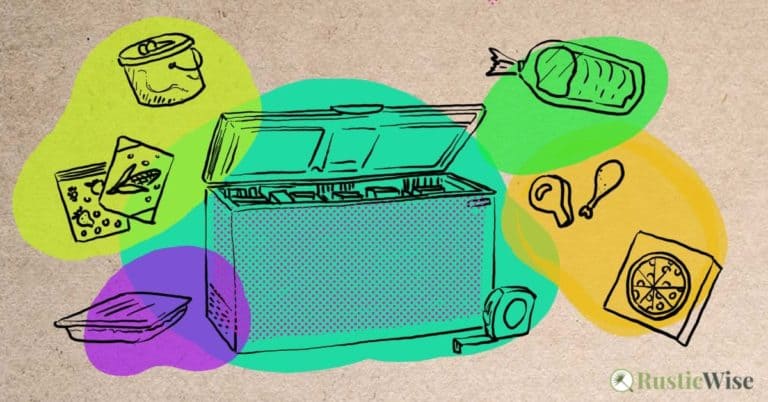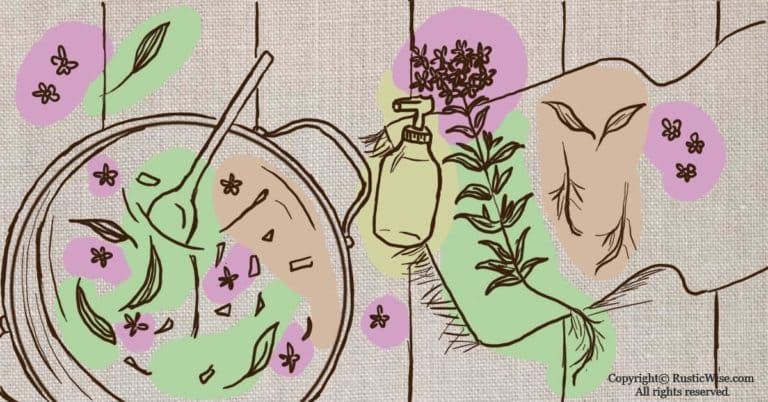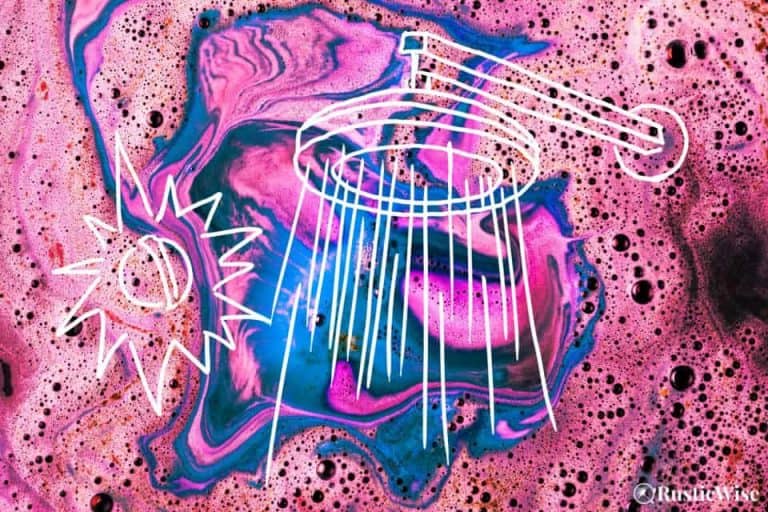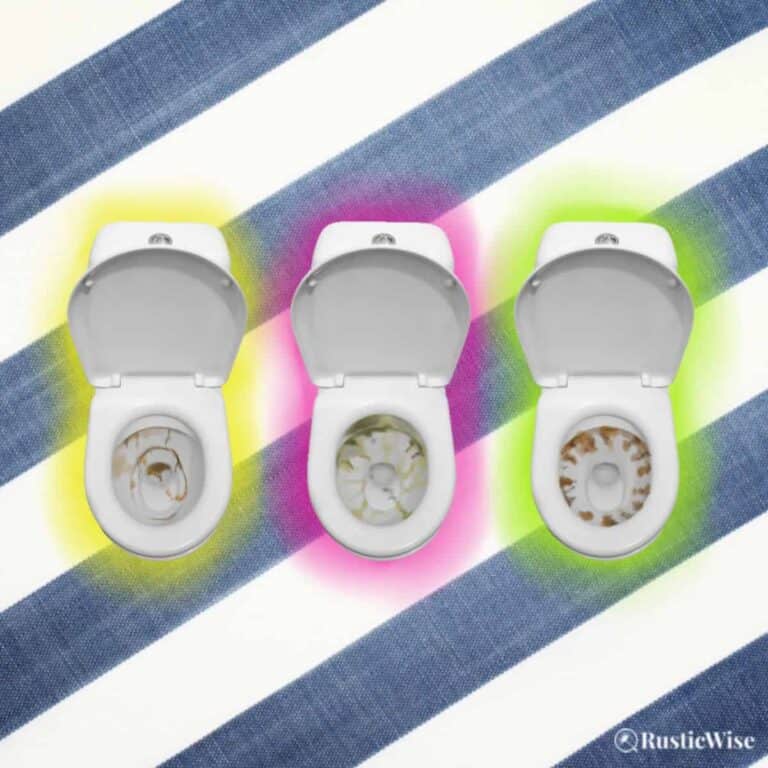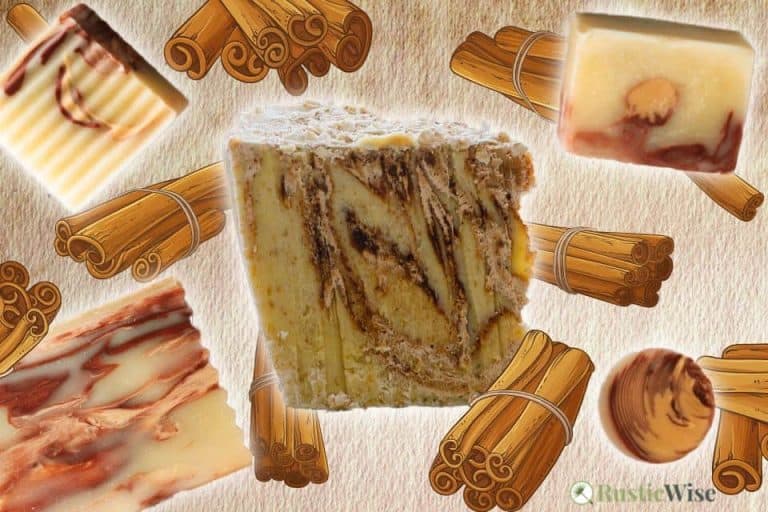Adding Vitamin E in Soap Making: Does It Actually Do Anything?
RusticWise is supported by its readers. When you purchase through links on our site, we may earn an affiliate commission. As an Amazon Associate, we earn from qualifying purchases. Thank You!
Touted for its skin nourishing properties, vitamin E in soap making is a common additive. But does it actually do anything? Perhaps the small amount of vitamin E used in cold process soap could be better saved for leave-on skin products such as body butter or lip balm. However, vitamin E is effective in extending the shelf life of fixed oils for soap making.
Whether you’re a fan of using vitamin E in your homemade soaps or not, read on to learn more about this skin nourishing antioxidant.
What you need to know about vitamin E for skin
In skincare, there are different types of vitamin E: tocopherols and tocotrienols. Each of these two main groups further comprises four sub-forms: alpha-(α-), beta- (β-), gamma-(γ-), and delta- (δ-) tocopherol or tocotrienols.¹
The more common and abundant form of vitamin E is tocopherol. (You’ll commonly find soap suppliers selling vitamin E as Tocopherol T-50.)
Benefits of vitamin E for the skin
Using vitamin E for skincare is beneficial in several ways.
Contrary to popular belief, studies have not shown vitamin E as an effective agent in healing wounds, or minimizing the appearance of scars.¹
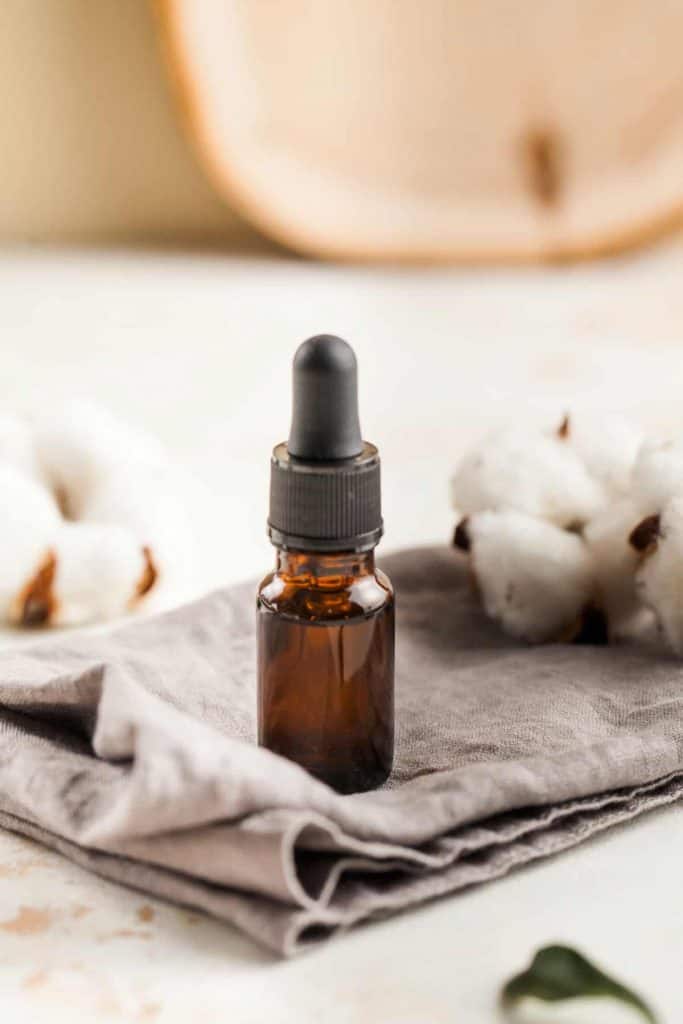
A closer look at vitamin E in soap making
You won’t find vitamin E listed on any soap calculator as it’s not intended as a base oil.
With soap making, we sometimes use vitamin E as an add-in or additive—a few drops of something nourishing. But seeing as how a bottle of vitamin E isn’t exactly cheap, is it worth adding to homemade soap to get the skin nourishing benefits of vitamin E?
Now, if you are someone who loves adding vitamin E to your batch of cold process (or hot process soap), then by all means, continue to do so.
I’m only playing devil’s advocate and am questioning the idea of adding vitamin E in a soap bar and expecting glorious results on skin by adding a minuscule amount. Vitamin E plays another important role in soap making, which is to extend the shelf life of fixed oils, which we’ll cover below.
Many soap makers see little value in adding vitamin E to cold process soap as an additive in your bar of soap to get the benefits of the oil.
Here’s why.
The miniscule amount of vitamin E oil added during soap making will do little in the finished cold process soap. Vitamin E is a sticky liquid and, if added in large amounts, turns your batch of soap sticky as well. So, if added at all, we should keep it to much less than 1 percent.
If you’ve ever made a batch of cold process, you’re probably familiar with how lye can wreak havoc and create unexpected surprises in your finished batch of soap. Lye can turn lovely hued botanicals brown, devour fragrances, mess with your colors, and gobble up any good qualities in your additives—this includes your vitamin E oil.
The addition of sodium hydroxide or potassium hydroxide lye causes a chemical reaction known as saponification. Simply put, lye acts as the magic ingredient that allows water and oils/fats/butters/wax to combine to create soap.
During saponification, triglycerides (oils and fats) are broken down into glycerin and fatty acids. The result is soap, an alkali salt from fatty acids. The properties of your finished soap (hardness, lather, conditioning, and cleansing) largely depend on the base oils you use in the recipe—not so much the additives, like vitamin E.
To get the nourishing benefits of vitamin E, one would assume you should leave it on the skin for a period of time to fully absorb the benefits.
This isn’t the case with soap, which most people lather and rinse off in a matter of seconds (at least 20 seconds if you’re following proper handwashing guidelines!).
The jury is out, but to me, the price of adding vitamin E to batches of cold process soap isn’t worth it. Vitamin E is probably best used for other purposes.
Note: While you’re certainly free to add vitamin E to your batch of cold process homemade soap if you like, why not save it for your handmade body butter, lip balm, or other skin care products instead? It could be argued that you’ll get more bang-for-your-buck when using vitamin E for leave-on skin products where its qualities will shine through. If adding to cold process soap, keep the amount minimal: about 1 teaspoon per pound of soap.
Using vitamin E in hot process soap
If you want to add some vitamin E to your hot process batch, do so after the cook. By this time, your soap batter will have reached gel phase, letting the properties of vitamin E remain fairly intact.
Can you add vitamin E to melt and pour soap?
Yes, you can add vitamin E to melt and pour soap, but less is more. Unlike cold or hot process soap, melt and pour soap bases have already undergone saponification (and are already ready-to-use soaps). If you add too much, your finished soap will feel greasy or oily.
Keep vitamin E to around 1 teaspoon per pound of soap for melt and pour.
How do you add vitamin E to liquid soap?
You can add vitamin E to homemade liquid soap and get the moisturizing and nourishing properties of it without worrying about heat or lye damaging it. Keep the amount small to avoid the stickiness of vitamin E—around 1 tablespoon per cup of liquid.
You might like
Premium Vitamin E Oil Tocopherols T-50, 8 oz.
- Natural non-GMO and 100 percent organic, not tested on animals.
- Great in soaps, creams, lotions and for massage.
- Keeps skin moisturized.
Found on Amazon
Check Current Price
Those in Canada and the UK should be taken to the product listing in your region.
A common misconception of vitamin E
While vitamin E works to extend the shelf life of fixed oils, it’s not intended for use as a preservative. Vitamin E is not a preservative as it does not kill bacteria.
Kevin Dunn, the soap scientist behind the book Scientific Soapmaking, did an experiment on pure olive oil soap to test out how different artificial and natural additives actually worked to prevent dreaded orange spots (DOS).²
Dunn experimented using grapefruit seed extract, vitamin C, vitamin E, sodium citrate, butylated hydroxytoluene (BHT), rosemary oleoresin extract (ROE), and sodium ethylenediammine tetraacetate (EDTA).
The results show that vitamin E did NOT work as a preservative, as soaps were still prone to DOS. (In case you’re wondering, the additives that best prevented orange spots in homemade soap were a combination of both BHT and sodium citrate.)²
So while vitamin E doesn’t work as a preservative per se, it can lengthen the shelf life of fixed oils.
In the world of soap making, some vegetable oils are more prone to rancidity because of their composition of fatty acids. In particular, oils that contain high amounts of linolenic and linoleic fatty acids increase the chance of rancidity.
A few examples of oils prone to rancidity include grapeseed oil, hempseed oil, soybean oil, and sweet almond oil.
How to use vitamin E to extend shelf life of oils
Once you’ve bought a few new bottles of soap making oils, add a few drops of vitamin E. Adding a small amount (about 0.5 percent, or less) to your fixed oils should keep them free of rancidity for longer.³ If you’ve ever experienced your oils going bad, you’ll remember the powerful odor and discoloration that often occurs.
But don’t go overboard. Adding too much vitamin E to your bottles of oils can speed up the rate of oxidation and also cause them to go rancid more quickly.
Rancidity occurs commonly in unsaturated (double bonds) or polyunsaturated oils (two or more double bonds). These double bounds break down more easily and form new (and stinkier) bonds with free radicals, typically a single oxygen atom.⁴
Saturated fats (no double bonds) on the other hand, have longer shelf lives.
Two factors that speed up the oxidation of oils are heat and light. Store your oils in a cool, dark place.
As vitamin E is an antioxidant, it works to prevent oxidation by lending electrons to the free radical and in effect “stabilizing” the liquid.⁴
Soap making oils rich in vitamin E
I haven’t found any relevant studies showing exactly how much vitamin E remains in finished soap after saponification, but many soap makers choose to use vegetable oils rich in vitamin E as part of their soap recipe.
Using oils high in vitamin E may be a more cost-effective way than using pure vitamin E in soap making.
A few oils rich in vitamin E are:
- Avocado oil
- Canola oil
- Peanut oil
- Safflower oil
- Soybean oil
- Sunflower oil
- Wheat germ oil
Tip: Many of these oils rich in vitamin E are prone to rancidity and have shorter shelf lives. Try looking for high oleic varieties of these oils which have a longer shelf life.
The final word: adding vitamin E in soap making
If you love the idea of using vitamin E oil in your handmade soap, then please continue to use it. As vitamin E is comparably more expensive than many other soap making oils, I would suggest to use it in skin care products you leave on, rather than wash off to get the most out of it. Adding a few drops of vitamin E can lengthen the shelf life of soap making oils though, so keep a bottle of vitamin E around for this!
New to making soap? 🧼❓
👉We have a fantastic overview on the whole soapmaking process here: read our Timeless Guide To Soapmaking.
If you would like to see our soapmaking posts organized by topic type, see our Soapmaking Collection.
Would you like more timeless tips via email?
Fun tips to help you live an independent, self-sustaining lifestyle. Opt-out at any time.


References
- Oregon State University, Vitamin E and Skin Health, https://lpi.oregonstate.edu/mic/health-disease/skin-health/vitamin-E. Accessed November 2021.
- Handcrafted Soap & Cosmetic Guild, The Dreaded Orange Spot, https://www.soapguild.org/how-to/make-soap/dreaded-orange-spot.php. Accessed November 2021.
- Windy Point Soap, Vitamin E MT-50, https://www.windypointsoap.com/products/vitamin-e-mt-50. Accessed November 2021.
- Barclay-Nichols, Susan (22 September 2016). “Fatty Acids and Rancidity“, Wholesale Supplies Plus. Accessed November 2021.

Author: Theresa Tesolin
Theresa is co-founder of RusticWise. She helps people unleash their inner DIY spirit by encouraging them to get dirty and make or grow something from scratch.

